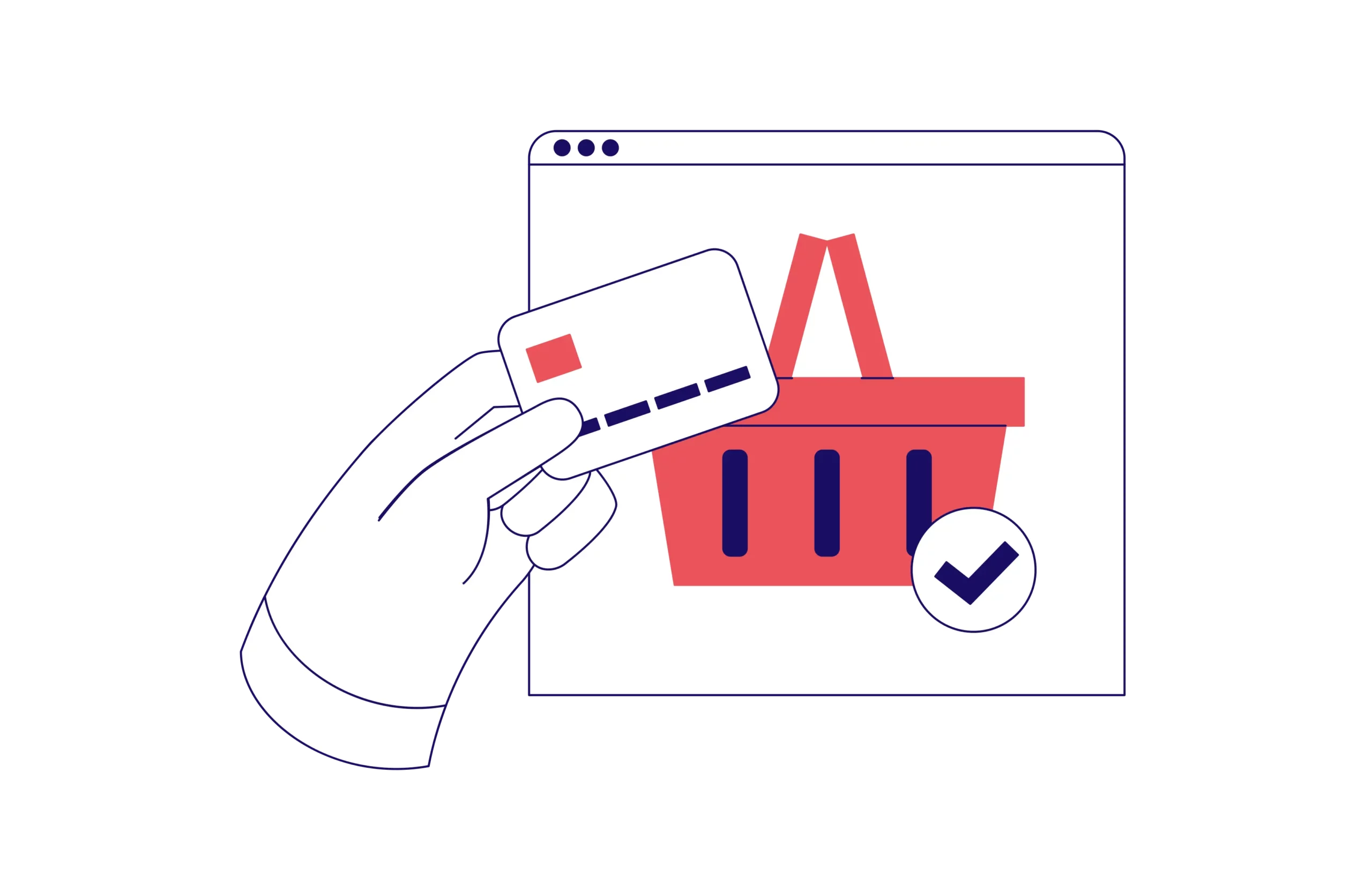The electronic payment landscape is booming. In January 2025, 65% of U.S. adults reported using a digital wallet at least once in the past month.[1]Capital One Shopping Research. “Digital Wallet Statistics“. Accessed June 24, 2025. The rise of electronic payment methods and online marketplaces has transformed how businesses accept online payments — shifting from clunky integrations to seamless payment experiences. One model helping to fuel this revolution is PayFac-as-a-Service (PFaaS), which empowers software platforms to become payment facilitators without the heavy lifting of building and maintaining complex payment infrastructure. This guide explains the PFaaS payment model and how your business can use it to unlock new revenue opportunities.
Key Takeaways
- PayFac-as-a-Service (PFaaS) typically allows platforms to process payments under a third-party provider’s infrastructure, often using an master merchant account. Some providers offer individual sub-merchant IDs for enhanced control.
- Independent Software Vendors (ISVs) and Software-as-a-Service (SaaS) businesses can utilize PFaaS to establish new revenue streams and provide better customer experiences.
- Leveraging the services of a PFaaS provider rather than becoming a fully registered PayFac may be faster and more cost-effective.
What Is PayFac-as-a-Service?

PFaaS is a payment model in which a business leverages the established infrastructure of a third-party provider to process payments on behalf of its users, known as sub-merchants. When a payment is made through the platform, it’s processed under the provider’s master merchant account.
The model’s speed and implementation are its main appeal. Platforms can quickly integrate payment processing capabilities without the time, cost, and regulatory hurdles typically involved in becoming a registered payment facilitator. The provider handles the complexities of underwriting, compliance, and payment processing, allowing the platform to focus on its core business offerings.
Since payment processing activity funnels through the provider’s master merchant account, your business relies heavily on the provider for critical functions, forgoing some direct control over payment operations and data. However, this isn’t always the case, as advanced PFaaS providers can offer scalable, custom solutions.
How Stripe’s PFaaS Model Compares to Others
Stripe’s PFaaS model, Stripe Connect, operates under Stripe’s registered PayFac status. This modular account system onboards platforms and their sub-merchants under Stripe’s master account. Depending on the account type —Standard, Express, or Custom — Stripe Connect offers varying levels of control.
As a PFaaS offering, Stripe Connect provides businesses with several key features:
- Streamlined Onboarding: Platforms can almost instantly accept payments online without a merchant account for their users, often with minimal underwriting.
- Compliance and Fraud Protection: Stripe Connect provides a suite of tools for Know Your Customer (KYC) verification, Anti-Money Laundering (AML) checks, fraud detection, and tax reporting.
- Developer-Friendly APIs: With developer-friendly APIs, integration is relatively straightforward even if you have limited technical expertise.
- Tiered Account Options: Stripe Connect offers three account levels, providing varying degrees of control and branding for your business.
The differences between Stripe Connect and other PayFac-as-a-Service companies or third-party payment processing providers often boil down to the degree of control they offer. Other models might offer:
- Individual Sub-Merchant IDs: Some providers allow platforms to have unique sub-merchant IDs for their users. This provides more granular reporting, better control over individual activity, and potentially more favorable dispute resolution.
- Greater Control over Payment Flow: With some providers, platforms may be permitted to have more direct involvement in settlement and payout processes, giving them greater control over how sub-merchants receive their funds.
- Customizable Risk Management: Platforms might have more say in setting risk parameters and managing chargebacks rather than relying solely on the provider’s automated systems.
- White-Label Options: Stripe’s Custom level offers interface customization, but some hybrid models enable more extensive white-labeling to deliver a holistic customer in line with the platform’s brand.
These features can give platforms more transparency, customization, and flexibility in managing eCommerce payment processing for its users.
Core Benefits of PFaaS for Platforms and ISVs

PFaaS can offer several benefits for ISV and SaaS businesses that want to provide payment processing services to users. Some of the core benefits include:
- New Revenue Streams: Instead of simply referring users to a third-party payment processor and earning a one-time referral fee, platforms can take a percentage of transactions to create a substantial new income stream.
- Enhanced User Experience: Embedded payments enable users to complete transactions directly on the platform. This creates a seamless, integrated experience that reduces friction and improves conversion rates.
- Faster Merchant Onboarding: PFaaS providers significantly accelerate this process by allowing platforms to onboard their sub-merchants in a matter of minutes. This removes a major barrier to entry for new users and accelerates time-to-revenue for the platform.
- Reduced Compliance Burden: PFaaS providers assume a significant portion of the compliance and security responsibilities by handling regulatory compliance, fraud monitoring, and chargeback management.
- Scalability and Flexibility: As a platform’s user base and transaction volumes grow, the underlying payment infrastructure can handle the increased load seamlessly. Platforms can also expand into new markets or offer new payment methods.
Key Differences Between PFaaS and Becoming a Registered PayFac
Both PFaaS and PayFac payment models enable platforms to monetize payment support for users, but they’re fundamentally different approaches with distinct trade-offs. Here are some key differences[2]Mastercard. “Find a Payment Facilitator.” Accessed June 24, 2025.:
| PFaaS | Registered PayFac | |
| Time and Cost to Market | PFaaS offers a quick solution, facilitating integration often in a matter of days with minimal upfront investment. | Full PayFac registration to facilitate transactions on behalf of sub-merchants can take months and significant capital investment. |
| Compliance and Risk Management | Providers bear the primary responsibility for PCI compliance, KYC/AML checks, fraud monitoring, and chargeback management. | PayFacs are often more directly responsible for compliance and risk management. |
| Infrastructure and Maintenance | The platform integrates the provider’s existing payment gateway, payment processing, and back-end systems. | Becoming an in-house PayFac system requires building, maintaining, and regularly updating these systems. |
What to Look for in a PFaaS Provider
Choosing a PFaaS provider requires careful evaluation beyond the initial setup. Here’s some points to consider:
- Merchant Account Structure: Determine whether the provider use an aggregated master account (fast but less control) or individual sub-merchant accounts (more control and transparency).
- Support and Relationship Management: Evaluate the provider’s responsiveness, expertise, and approach to handling disputes and ensuring compliance.
- Growth and Customization Flexibility: Ensure the provider offers scalability, robust APIs, and comprehensive reporting. Your provider should enable future growth, not restrict it.
Discover the PaymentCloud Advantage
PaymentCloud is a comprehensive payment solutions partner that offers secure, customizable, and scalable PFaaS solutions. Our model stands out by empowering platforms with improved control and transparency over each user’s payment experience. Looking to add new revenue streams and upgrade your platform’s payment setup? PaymentCloud’s payment integrations can help you get there.
PayFac-as-a-Service FAQs
Is a PayFac a merchant of record?
A PayFac is typically the official merchant of record (MoR) for transactions processed under its account. However, depending on the PFaaS model, the platform may appear as the MoR to customers or retain partial responsibilities, especially in white-labeled or hybrid arrangements.
What is the difference between PayFac and PSP?
A Payment Service Provider (PSP) facilitates payments between merchants and customers. A PayFac has a more significant role due to its comprehensive services, including payment processing, compliance observance, and fraud prevention.
What is the difference between an ISO and a PayFac?
An Independent Sales Organization (ISO) connects businesses with payment processors to payment operations. A PayFac actively manages processing, risk, compliance, and security.
What is a PayFac vs a payment processor?
A payment processor handles the technical aspects of facilitating the transfer of information between banks and card networks. A PayFac often includes payment processing as one of its services but also provides businesses with additional services.
What is an example of a PayFac?
Stripe is one of the most well-known examples of a PayFac.




